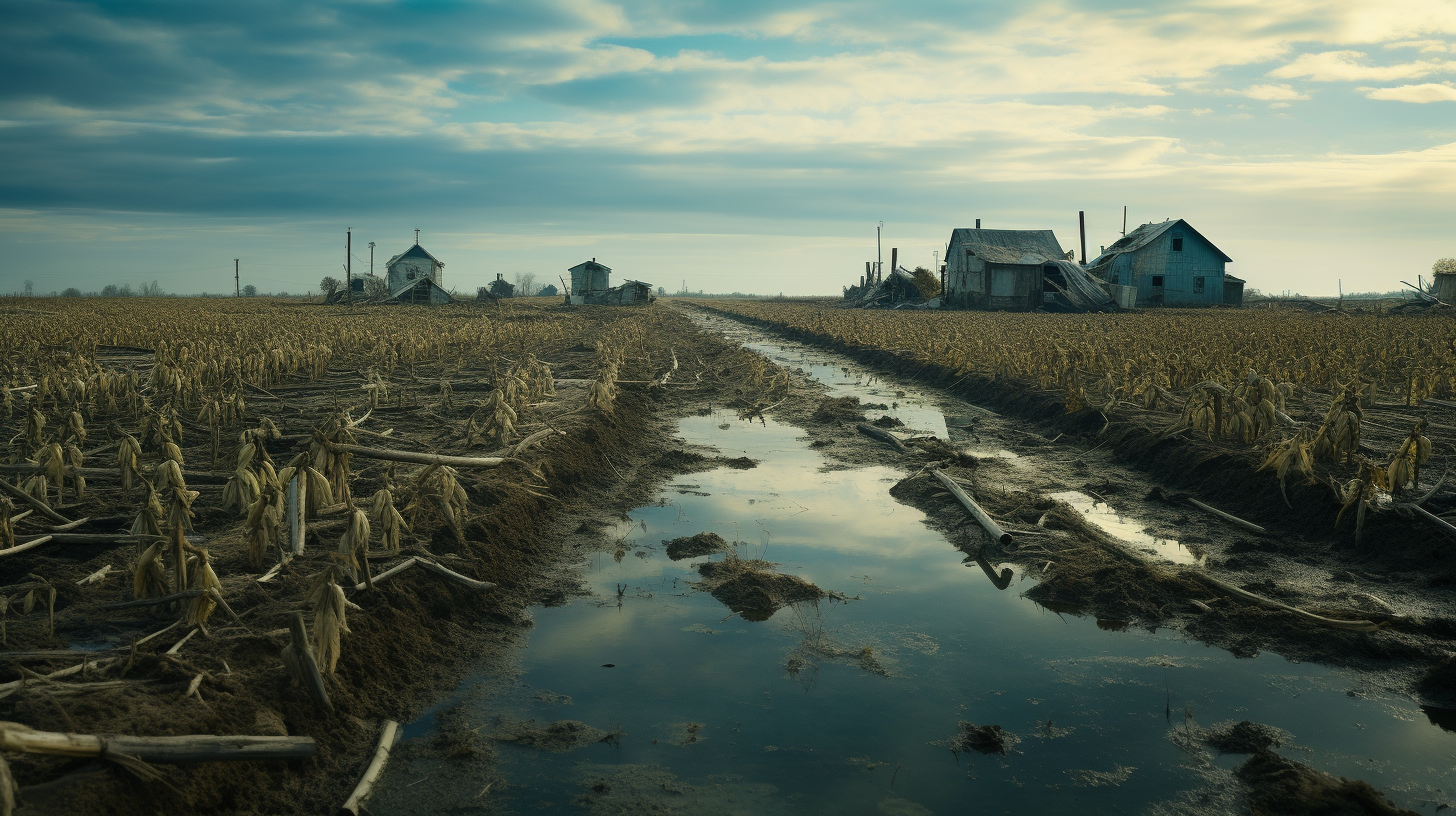Amid the chaos of a world gasping for breath due to environmental negligence, humanity has been compelled to seek refuge where earth and sky merge – upon the vast, unforgiving sea. In a landscape marred by the scars of climate disasters, we find a resilient yet wistful testament to perseverance: Farms Afloat, the waterborne enclaves of agriculture embodying the final frontiers of human sustenance.
As land once teeming with biodiversity has surrendered to desertification or has been swallowed by rising seas, these oceanic oases stand as beacons of green, bobbing resiliently on the rhythmic pulse of the Earth’s aquatic heartbeat. Rigged onto lashing waves, they represent not idyllic retreats but stark illustrations of a future we were too slow to prevent, now hanging by a thread above the abyss of a warming ocean.
Visual Encounter: Picture undersized crops defiantly sprouting from repurposed vessels, their roots lapping not the rich soil of yore but a hydroponic lifeline. Veggie patches are interspersed with riggings, and wind turbines, buzzing with a somber energy, signal a shift in agriculture as profound as the transition from hunter-gathering to settled farming. It’s a scene where the moon’s gravitational pull is as crucial to planting schedules as the sun’s rays – a bizarre alliance of celestial forces and human desperation.
The descendants of Noah in this semi-apocalyptic narrative are the farmers at sea, a new lineage of agrarian pioneers. Their tools of the trade have evolved: satellite data predicts not profits but survival, drones are repurposed from delivery to sowing seeds, and knowledge of naval architecture is now as crucial as understanding crop rotation.
From their labors sprout not just plants but questions: Is this existence sustainable? Can we brace against the relentless pummeling of storm surges or the slow poisoning of our seas with acidification? Is ingenuity enough?
In tales of the Floating Farm Project or the Oceanix City of the bygone optimistic 2020s, there was hope. Today, they serve not as steps toward a utopian solution, but desperate measures in dystopian times where the tide rises both literally and metaphorically against humanity’s foothold on this planet.
An expert in aquaculture remarked recently, with a haunting grin, ‘We’re skimming more than just algae for our supper; we’re skimming time from an hourglass that’s fast running out.’
In this bizarre, brine-washed reality, menus have adapted to an aquatic diet where fish and seaweed have overtaken chicken and corn, becoming bizarre reminders of a terrestrial life we once knew. Our palates adjust to survival, as gourmet becomes a forgotten language in a silent world devoid of bees to pollinate and animals to graze.
This cruel irony of thriving crops upon a climate-ravaged sea is an eerie ledger of our own making. The minimalistic lifestyle of sea-farmers, once a bohemian dream, is now a compulsory existence — not an arcadia, but a stark, saline survivalism.
As the old adage goes, we reap what we sow. In this grim dance with destiny, we’re now planting on water, reaping bitter harvests of regret, and sowing seeds of adaptation in hopes of yielding another day’s grace from a dying planet’s ledger.
But what of tomorrow? With synthetic meat sprouting in labs and insects edging onto the menu, the agricultural revolution churns relentlessly on. Yet, the ghost of plenty haunts these high seas homesteads—a perpetual reminder that not all revolutions bring progress, and not every evolution offers a future.
Lifeboat Lessons: Who knew that the lifeboats of the Titanic would be precursors to our current state? Who could have fathomed our ark would be afloat, not on an ocean of salvation but upon waves of despair? As the farms afloat sway to the dirges of a dying world, they echo a solemn dirge for humanity—a reminder of all that’s lost, and of the flotilla we now call home.
